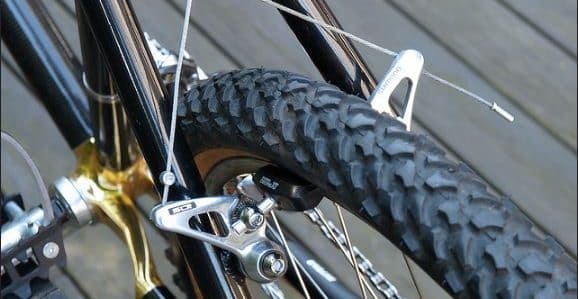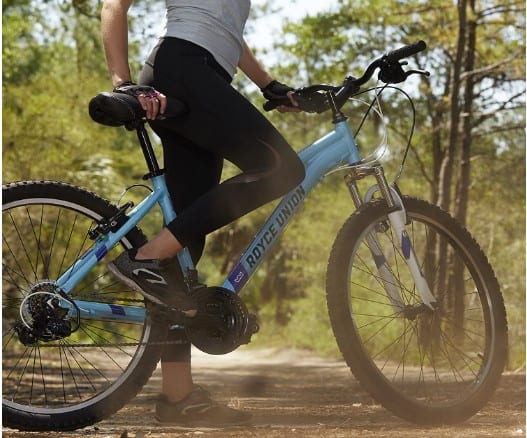With so many types of bike brakes in the market, it is possible to get overwhelmed when figuring out which one is ideal for you. One of the oldest types of brakes is the cantilever. However, are cantilever brakes any good?
Cantilever bike brakes are good for bicycles with wide tires because the system has wide tire clearance. In addition, they work perfectly even in wet and muddy situations. At the same time, cantilevers don’t wear out your rims as other rim brakes.
Also, the cantilever brake set isn’t as heavy as other braking sets, such as the disc brakes. Therefore, for riders who like keeping their bikes as light as possible, the cantilevers can be an excellent braking solution.

Are Cantilever Brakes Any Good For Racing?
Brakes are a critical part of a bicycle, whether you are a beginner or a pro. Originally, cantilever brakes mainly featured on touring bikes.
With time, the cantilever brakes evolved into a reliable braking system. However, are they suitable for use in racing competitions?
Yes, cantilevers are good for bike racing. For example, in cyclocross and mountain biking, a cantilever braking system is the most ideal.
First, it has a wide tire clearance that accommodates the extensive tire widths used in mountain and cyclocross bikes.
With the invention of mountain bikes with knobby tires, the only braking system that could fit was the cantilever.
As a result, the olden days’ MTBs featured cantilever brake systems. However, the newer mountain bike models have gradually drifted to disc brakes.
All the same, cyclocross race bikes still use the cantilever brakes since the system rarely traps dirt, and they can accommodate the wide tires.
Also, the cantilever brakes are good for off-road racing since they perform perfectly even in wet and muddy conditions.
Since UCI has a regulation that sets the max-width of handlebars at 50cm, most racing bicycles feature drop bars. Fortunately, cantilever brakes use drop bar compatible levers that make the system good for racing bikes.
Are Cantilever Brakes Strong?
As explained in the article, “Why Do Cyclocross Bikes Have Cantilever Brakes?” we found that cantilevers are short pull brakes. Therefore, a slight push on the brake levers moves the brake arms through a long travel. In other words, the levers have low leverage.
So are cantilever brakes any good? Are they strong enough?
As earlier mentioned, cantilever brakes were the only type of brakes used on touring bikes for years. They were the braking solution even before the invention of mountain bikes. Notably, they went on and evolved into a powerful baking mechanism.
Actually, cantilevers are so strong that they are the default braking solution for tandems and loaded touring bikes.
If set or adjusted correctly, cantilever brakes provide all the necessary force to stop any bicycle. The greatest challenge to most beginners is setting the cantilever braking system to its finest.
Notably, when you have to ride on wet and muddy surfaces, cantilevers are the strongest brakes.
In addition, if you intend to ride wide tires, cantilevers are the best rim brakes for you.
Best Cantilever Brakes – Quick Pick
There are several cantilever brands in the market, but knowing the best saves you the pain of try and error. So what are the best cantilever brakes in the market?
1. SHIMANO BR-CT91 Altus Cantilever Brake: Easiest to mount and adjust.
2. Avid Shorty Ultimate Cantilever Brake: Light in weight with adjustable arm widths.
What Are The Advantages Of Cantilever Brakes?
Cantilever bike brakes have been around for decades, and they are still quite reliable. Actually, some touring and cyclocross bike manufacturers use cantilever brakes as their default braking system.
So, what are the advantages of cantilever brakes? What made them relevant and reliable to the present day?
1. They Are Light In Weight
One of the notable features of the cantilever braking systems is that they are light in weight. First, they have minimal components.
Unlike the other systems, cantilevers only come with two separate but symmetrical brake arms joined by a straddle cable.
As a result, cantilever brakes add minimal weight to your bike.
2. Have Long Lever Arms
The other point that makes the cantilevers stand out is the long lever arms. Don’t confuse this with long pull brakes.
Technically, this is the length of the handle. As a result, you can exert maximum pressure when braking without much strain.
In addition, it makes the brakes stronger than when using short lever arms.
3. Best Braking Power In Muddy Or Wet Surfaces
One of the greatest strengths of the cantilever brakes is that they remain equally efficient even in wet and muddy conditions.
In most of the other brake systems, wetness affects their efficiency. That’s not the case with cantilevers.
Notably, cantilever brakes rarely get jammed with mud and other forms of debris when riding in muddy terrains.
Also, wetness doesn’t adversely affect the system’s efficiency; it works as normally as when dry.
Actually, other than compatibility with wide tires, the ability to hold up in wet and muddy conditions made the cantilever ideal for the olden mountain bikes.

4. They Are Affordable
Affordability of accessories and crucial parts such as the brake systems is everything when it comes to bike maintenance.
Notably, some brake systems are generally expensive.
However, cantilever brakes are good for people operating on a tight budget or even youth who have to strain their pocket money to service their bikes.
Not only that, but the cantilever brake system is also ideal for beginners who haven’t figured out which braking system will work best for them. This reduces the magnitude of losses in case the rider decides to go for another type of braking system.
5. Reduced Rim Wear
The other benefit of going for cantilever brakes instead of other rim brakes is that you experience less rim wear. Notably, the brake pads contact the wheel on the sides and not on the face with the spokes.
Therefore, your rim will last longer with cantilevers than with other rim brake system
Cantilever Brake Adjustment
Cantilevers are most times wrongly profiled as low power brakes by most cyclists. Well, these systems have their flaws, but when set properly, they produce a considerable amount of braking power.
So how do you adjust the cantilevers for maximum output?
The Caliper Angle
The angle between the seat stay or the fork-blade and the brake arm is known as the caliper angle. The greater the caliper angle, the smaller the mechanical advantage.
Therefore, as you set the pad extension, it is good to ensure the contact angle between the rim and the pad remains small.

Yoke Angle Adjustment
In cantilever brakes, adjusting the yoke angle has the most significant impact on the systems’ braking power and mechanical advantage.
Notably, the smaller the yoke angle, the higher the mechanical advantage. All the same, the most ideal yoke angle allows for a good tire, rim, and mudguard clearance.
When setting the yoke angle, avoid going to the extremes. Too much mechanical advantage would make the brake lever bottom out against the bars. On the other, too little of it would lead to a weak braking system.
Notably, shorter straddles form a wide yoke angle.
Are Cantilever And V Brakes Interchangeable?
The V brakes came from improvements done on the cantilevers by manufacturers to meet different riding styles. This doesn’t mean that cantilevers are not good anymore. But can you interchange the two systems?
The two systems may look similar, but they are worlds apart. Therefore, it isn’t possible to simply swap one for the other.
You can get the full detail from one of our earlier articles, “Are Cantilevers And V Brakes Interchangeable?”
Final Take
Our main question was whether cantilever brakes are any good. Our discussion clearly shows that cantilevers are efficient and reliable brakes despite having a few flaws.
The main factor that affects how good the brake system works is the quality of brake pads and how well you adjust the setup.
With proper adjustment, the cantilevers are as good as any other braking system. Actually, they are among the best for trail riding.